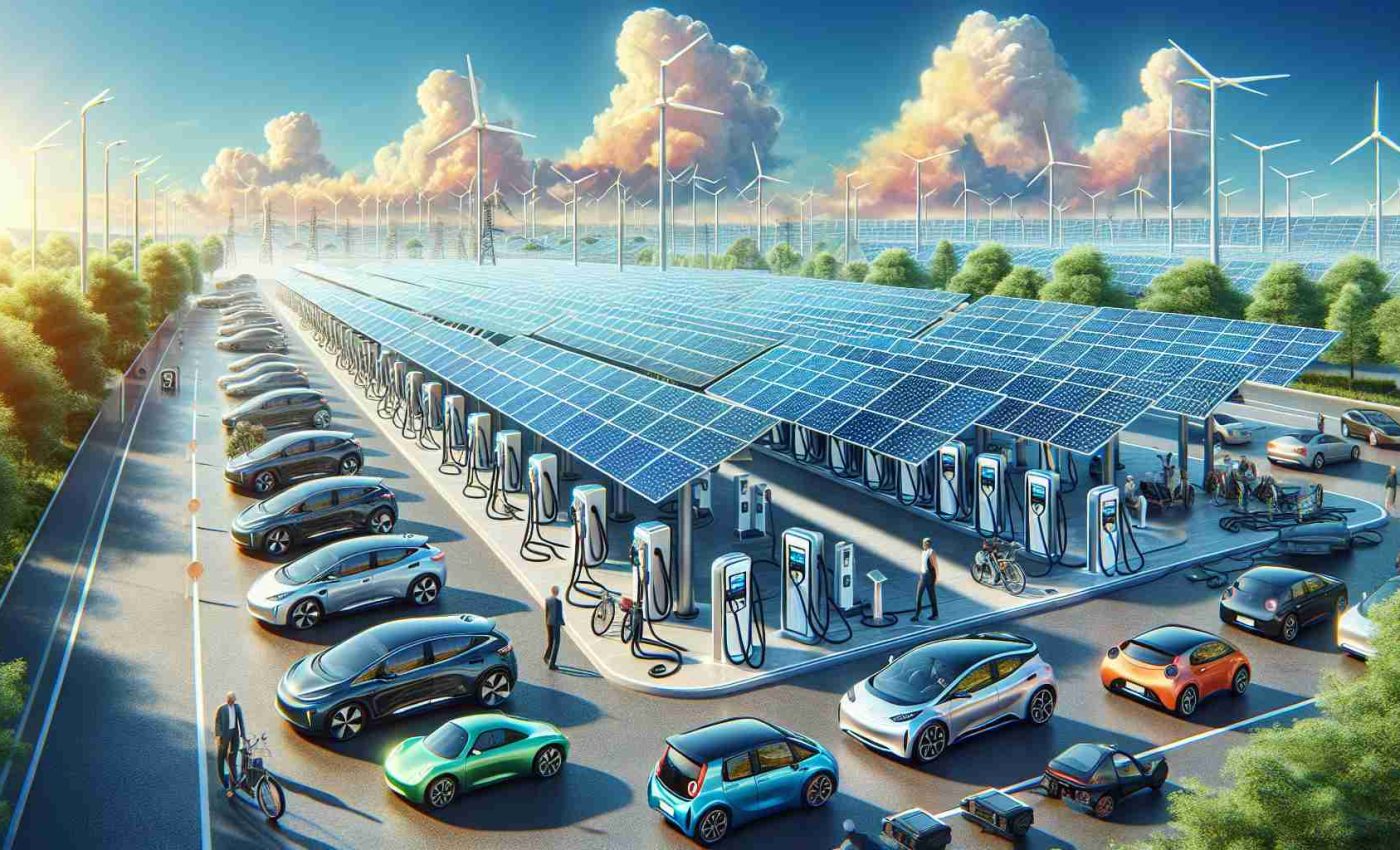Electric Vehicle Charging: The Future of Sustainable Transportation

Post Preview
Key Takeaways:
- The rise of electric vehicles (E.V.s) has demanded a robust and accessible charging infrastructure.
- Understanding different types of E.V. chargers enhances the user experience and promotes wider E.V. adoption.
- The public and private sectors are crucial in expanding E.V. charging networks.
- Technological developments are constantly improving the effectiveness and ease of charging electric vehicles.
The Rise of Electric Vehicles
The global transition to electric vehicles is accelerating at a remarkable pace. Governments worldwide advocate for reduced carbon emissions, so the demand for environmentally friendly cars is surging. According to BBC News, global E.V. sales have grown exponentially over the past decade, signaling a shift toward greener transportation options. This trend indicates a broader societal shift towards sustainable living as more and more consumers recognize the importance of reducing their carbon footprint. To support this surge, it’s critical to have accessible and efficient EV charging solutions available to users. The growing interest in E.V.s is also driven by commitments from major automotive manufacturers to transition away from internal combustion engines, further pushing the need for a robust charging infrastructure.
However, the widespread adoption of E.V.s hinges on vehicle availability and the accessibility and convenience of charging infrastructure. Potential E.V. buyers may be deterred by concerns about charging availability and ease of use without a reliable charging network. This drives the need for ongoing innovation and expansion in E.V. charging solutions to ensure that environmental and user demands can be met effectively. A stable infrastructure for charging electric vehicles (E.V.s) is essential to the market’s sustained expansion.
Understanding Different Types of E.V. Chargers
Three main types of E.V. chargers are available: Level 1, Level 2, and Level 3 (also known as DC Fast Chargers), each suitable for specific situations and charging needs.
- Level 1 Chargers: These chargers typically use a standard household outlet and provide the slowest charging speed, making them ideal for overnight charging at home. While they offer the convenience of using existing electrical infrastructure, their slower charging speed means they are best suited for those with predictable and low daily mileage. Homeowners benefit from the simplicity and low-cost setup of Level 1 chargers, making them an accessible option for many.
- Level 2 Chargers: These chargers require a 240V outlet and offer faster charging than Level 1 counterparts. Level 2 chargers, often seen in shopping centers, offices, and homes, reduce the time required to recharge an electric vehicle fully. They balance cost and efficiency, providing a viable solution for commercial settings and home installations. Users can expect significantly reduced charging time, making these chargers more suitable for daily use.
- Level 3 Chargers (DC Fast Chargers): These provide the quickest charging speeds, ideal for quick top-ups during long journeys. Predominantly installed along highways and busy urban corridors, they are designed to facilitate long-distance travel and reduce downtime. D.C. fast chargers can replenish an E.V.’s battery to 80% capacity in about 30 minutes, making them indispensable for electric road trips and those without home charging. However, they require significant infrastructure and investment, highlighting the importance of strategic placement and availability to optimize their use.
Role of Public and Private Sectors in E.V. Charging Infrastructure
Both public and private sectors play pivotal roles in expanding E.V. charging networks. Governments are investing heavily in public charging stations to encourage E.V. adoption. For instance, the U.S. government has allocated significant funds toward building a nationwide network of E.V. chargers, as the U.S. Department of Energy highlighted in this announcement. These initiatives often include grants and incentives to support the installation of charging stations in underserved areas, thereby increasing accessibility for all E.V. owners.
Simultaneously, private companies are partnering with property developers to install chargers in residential and commercial buildings, ensuring that charging facilities are accessible where people live and work. For example, businesses are integrating charging stations into their parking lots to attract eco-conscious customers and employees. This collaboration between private entities and property developers facilitates the creation of a cohesive and comprehensive charging network, promoting the seamless integration of E.V. charging into daily life.
Technological Advancements in E.V. Charging
Technological advancements are continually enhancing the efficiency and convenience of E.V. charging. Innovations like innovative charging systems, wireless charging, and network-connected charging stations are transforming the E.V. landscape. Intelligent charging systems allow users to optimize charging times based on electricity rates, reducing costs and alleviating pressure on the electrical grid during peak hours. These systems can also be combined with residential solar panels to optimize the usage of renewable energy.
Wireless charging provides a seamless and practical charging experience without using physical connectors. Vehicles with wireless charging pads can park over a designated spot for automatic charging, reducing wear and tear on charging cables and connectors. Additionally, network-connected chargers enable remote monitoring and maintenance, improving reliability and ease of use. These intelligent units can communicate with drivers via mobile apps, providing real-time information about the charging status and availability of nearby chargers.
Integration with Renewable Energy Sources
Combining electric vehicle charging with renewable energy sources like solar and wind power can further minimize the carbon footprint. Utilizing renewable energy for E.V. charging promotes sustainability and provides a cost-effective solution for energy management. Charging stations can function off the grid during peak hours or in distant areas with restricted grid access by utilizing renewable energy sources.
For instance, some charging stations may produce and use their clean energy since they are fitted with solar panels. This strategy aligns with more general objectives to fight climate change and lessen dependency on fossil fuels. The resilience of the charging network can be increased by using solar energy and battery storage to guarantee that E.V. chargers continue to function during power outages.
Challenges and Solutions in E.V. Charging
As the E.V. market grows, so do the challenges associated with scaling charging infrastructure. Key issues include the need for standardized charging protocols, investment in grid upgrades, and overcoming the “range anxiety” of potential E.V. buyers. Standardizing charging protocols can ensure compatibility across different E.V. models, making it easier for users to find compatible chargers regardless of the make or model of their vehicle.
Investments in grid upgrades are essential to support the increased electricity demand from widespread E.V. adoption. Upgrading the electrical grid to handle higher loads and implementing innovative grid technologies can help manage power distribution more efficiently. Educating consumers about the advancements in charging technology can also alleviate concerns about range anxiety. Providing clear and accessible information about the availability and performance of chargers can build confidence in the E.V. ecosystem.
Future Trends and Predictions
The future of E.V. charging is bright, with several trends and predictions pointing towards continued growth and innovation. The proliferation of E.V.s in the global market suggests an increasing need for ultra-fast chargers, which can recharge a vehicle in minutes rather than hours. Battery technology improvements will increase the range and efficiency of electric cars, making them more appealing to consumers and requiring convenient charging solutions.
Moreover, battery technology advancements will enhance E.V.s’ range and efficiency, making them even more appealing to consumers. Integrating blockchain technology in charging networks could also revolutionize how energy is traded and managed, offering new opportunities for decentralized energy systems. Blockchain technology can facilitate direct energy trading among peers and enhance the effectiveness of the energy market through a transparent and secure method for monitoring energy transactions and consumption. With these advancements, the future of E.V. charging is poised to be more efficient, sustainable, and user-friendly.



